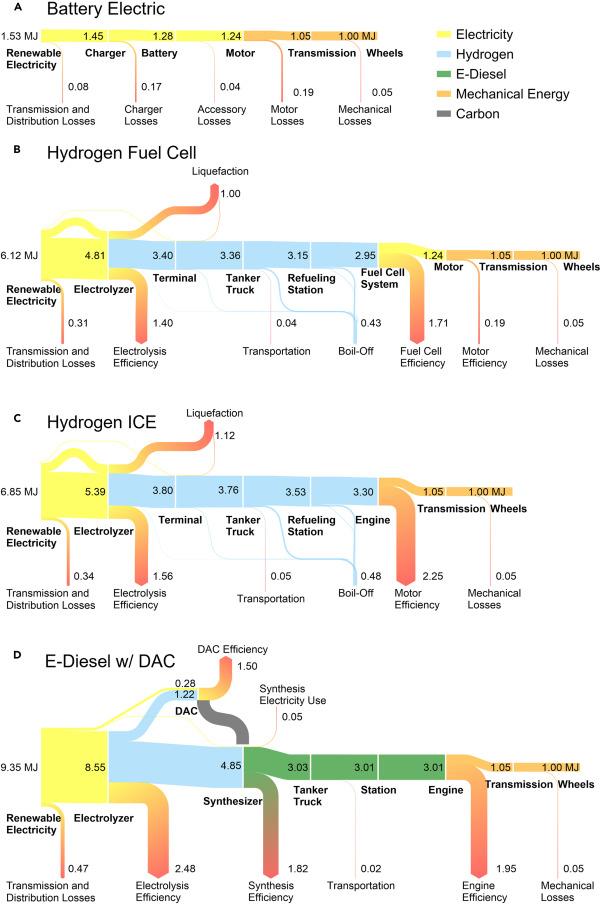A recent study by the University of Michigan sheds light on the energy required to deliver usable power to a truck’s wheels, depending on the technology used. The results, visualized through a Sankey diagram, are striking:
-
Electric truck: 1.53 MJ of renewable electricity
-
Hydrogen fuel cell truck: 6.12 MJ
-
Hydrogen internal combustion engine (ICE): 6.85 MJ
-
E-diesel truck: 9.35 MJ
These figures show the significant differences in energy efficiency. However, efficiency is just one aspect of the broader equation.
Let’s consider two additional scenarios that reflect real-world deployment:
-
A typical electric truck needs around 500 kW of power. To fully charge it in 30 minutes, the station would require a 1 MW connection, plus fast-charging technology.
-
On the other hand, 5 MW of electrolysis can produce 90 kg of hydrogen per hour. That’s enough to refuel at least three hydrogen trucks in parallel—within the same hour—if the station supports simultaneous dispensing.
As the transport sector shifts toward clean alternatives, it’s essential to weigh not just energy efficiency, but also infrastructure, scalability, and cost.
What’s your take? Can different technologies coexist and complement each other in the journey toward sustainable freight?
